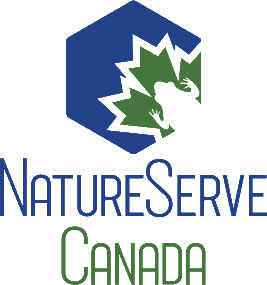Photos / Sounds
Observer
meravDescription
leaf miner on pelt lichen!
the lichen is posted here - https://www.inaturalist.org/observations/151245177
Photos / Sounds
What
Banded Foul Water Mosquito (Culex stigmatosoma)Observer
kyle_eaton_photographyDescription
I found this male Mosquito standing on the wall of a container containing a few inches of stagnant, putrid rainwater. The container used to be a pool waterfall feature, but it broke years ago and the pipes at the bottom became clogged.
I caught and killed it.
Photos 1 and 3 had an Auto White Balance applied to it in Photoshop. Photo 3 was also brightened. Photos 4-6 were sharpened and brightened.
Photos / Sounds
What
Cowpat Gem (Cheilymenia granulata)Observer
naturesarchiveDescription
in cow dung
Photos / Sounds
What
Urchin Gall Wasp (Cynips quercusechinus)Observer
chyropteraDescription
Gall on blue oak (Quercus douglasii)
Photos / Sounds
What
Jumping Spiders (Family Salticidae)Observer
nicklambertDescription
Don't think the hide out was made by the Salticid though??
Photos / Sounds
What
Metresura flavicepsObserver
meravDescription
this is not a captive creature. all arthropods were wondering around freely.
Photos / Sounds
What
Rose Scale (Aulacaspis rosae)Observer
meravDescription
on Armenian Blackberry
Photos / Sounds
What
Spined Soldier Bug (Podisus maculiventris)Observer
yerbasantaDescription
On Quercus agrifolia leaf
Photos / Sounds
What
Live Oak Petiole Gall Wasp (Melikaiella flora)Observer
yerbasantaDescription
Collected 9/15/23, refrigerated in a ziploc bag until 9/24 and dissected Quercus agrifolia acorn.
Preserved in 40% ethanol at 40°F.
Collected acorn from same tree, same date/time as the acorn gall observations below (2nd acorn):
Photos / Sounds
What
Trupanea californicaObserver
chyropteraDescription
Stem gall on Pearly Everlasting (Anaphalis margaritacea)
All found in same patch of plants:
https://www.inaturalist.org/observations/184160738
https://www.inaturalist.org/observations/184160742
Photos / Sounds
What
Gall Midges (Subfamily Cecidomyiinae)Observer
yerbasantaDescription
Update of 9/2/23 observation of Artichoke gall-like observation found on Quercus agrifolia.
https://www.inaturalist.org/observations/181449885
Larvae preserved in 40% ethanol and refrigerated.
Larvae measure ~2.5mm in length.
New gallformers.org code: "q-agrifolia-swollen-bud":
Gallformers page: https://www.gallformers.org/gall/5318
Photos / Sounds
What
Oak Gall Wasps (Tribe Cynipini)Observer
leslie_flintDescription
California Scrub Oak; This gall was found last year by Merav Vonshak except it was purple; I assume it will turn purple with time; this was a cluster of at least 3, maybe 4 galls. Gallformers: q-dumosa-pip-gall
Photos / Sounds
What
Trupanea californicaObserver
lumenalDescription
Stem swelling (gall) on Pearly Everlasting
Photos / Sounds
What
Genus BrasemaObserver
owickiDescription
Looks like this is a parasitoid on Coyote Bush Bud Gall Midge, Rhopalomyia californica.
I'm just guessing on the species because Russo says that Platygaster californica is the most common parasitoid on the galls and photos I've seen are roughly the same. But I gather that there are a handful of others, some from different families like Torymidae and Pteromalidae.
The other photos show the twig and the wasp apparently ovipositing or getting ready to do that.
What
Knotting Gall (Chirosia betuleti)Observer
randomtruthDescription
On Athyrium filix-femina. Think this is the right gall ID, but perhaps there's a similar species local to CA?
Photos / Sounds
What
Oak Gall Wasps (Tribe Cynipini)Observer
chilipossumDescription
@graysquirrel @merav @norikonbu @nancyasquith @megachile @garth_harwood
This is a fun one!
On Quercus berberidifolia, California scrub oak
https://www.gallformers.org/gall/3746
Photos / Sounds
What
Insects (Class Insecta)Observer
dlbowlsDescription
Gall on a nonnative pine in a park? I am looking at the brown thing on the green cone. I am not sure if this is a gall. I will remove it from the gall project if it is not.
Photos / Sounds
What
California Tiger Salamander (Ambystoma californiense)Observer
parpedDescription
Night heron with salamander?? ID please.
What
Stellar Gall Wasp (Feron stellulum)Observer
dlbowlsDescription
White Oaks, probably California Scrub Oak.
Photos / Sounds
What
Coral Gall Wasp (Burnettweldia corallina)Observer
norikonbuDescription
On blue oak
What
Subgenus MyrmaObserver
nickybayDescription
Infected by cordyceps fungus with lacewing eggs on the fungus.
Photos / Sounds
What
Plain-bellied Watersnake (Nerodia erythrogaster)Observer
ashwinvn2Description
Eating a tilapia
Photos / Sounds
What
Gall Midges (Subfamily Cecidomyiinae)Observer
lorri-gongDescription
on blue blossom ceanothus








































































































